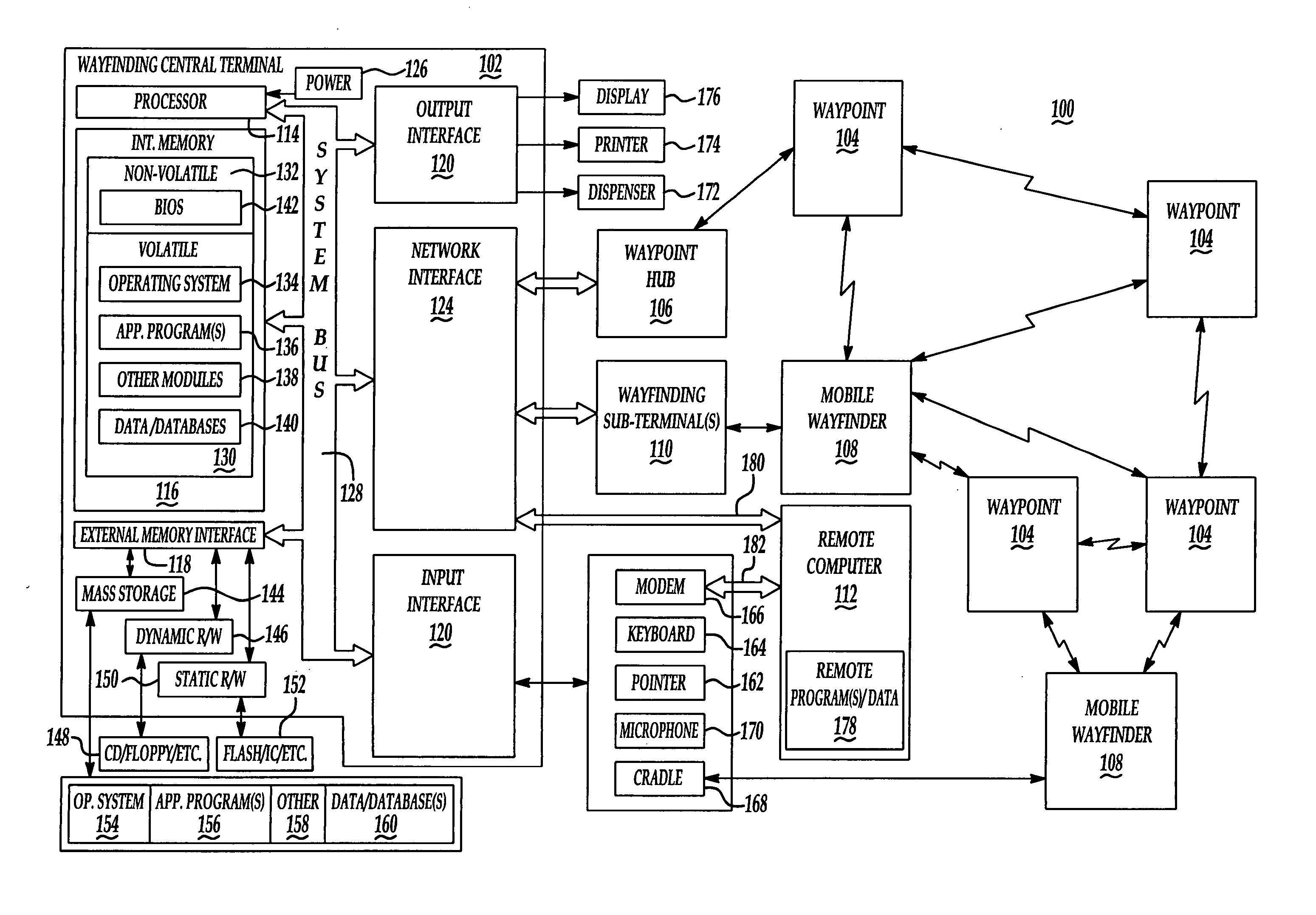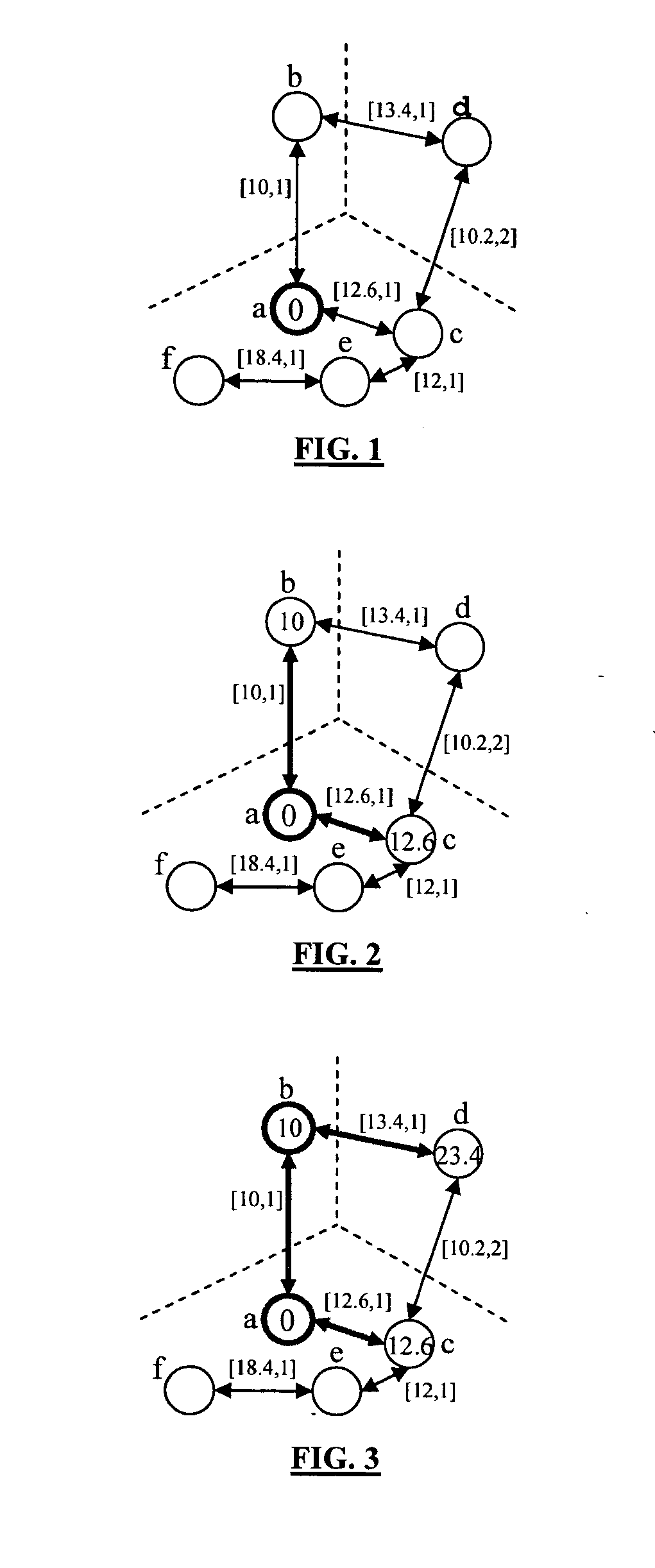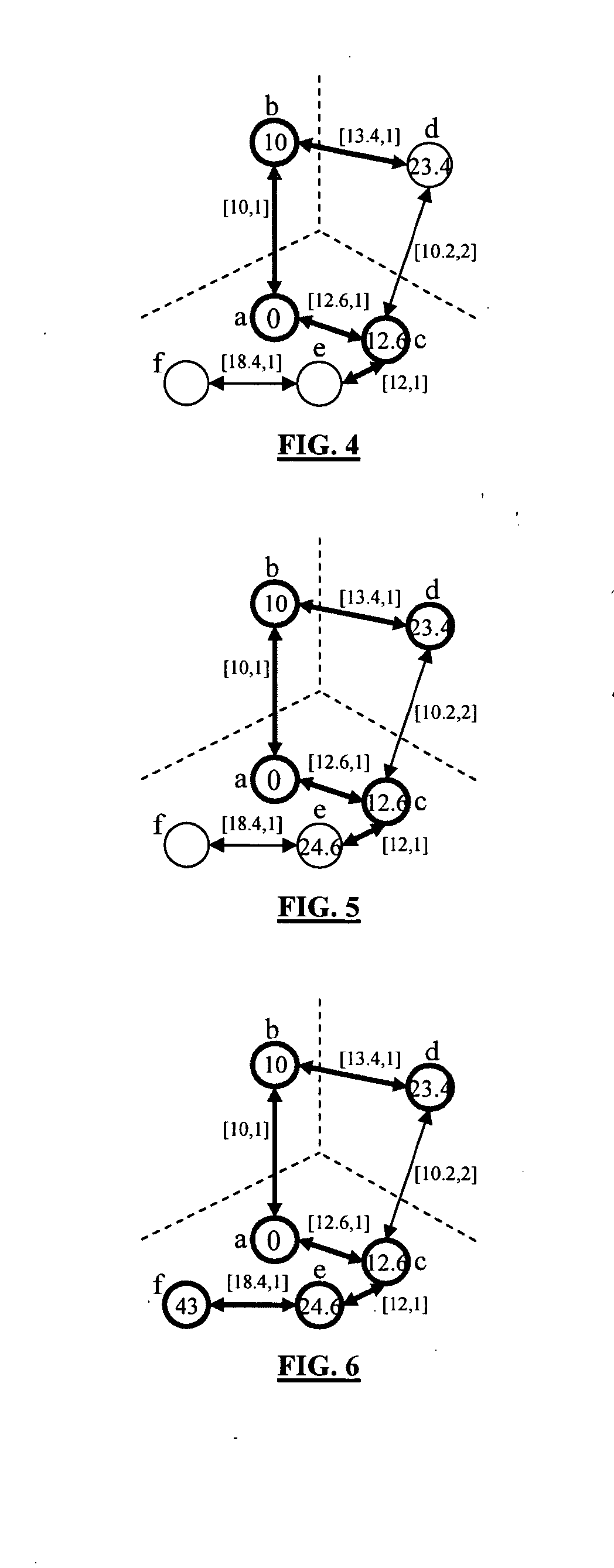Wayfinding
a technology of electrical communication and data processing, applied in the field of wayfinding, can solve the problems of poor security, poor wayfinding, and difficulty in finding the way around a hospital, and achieve the effects of improving safety, improving safety, and improving safety
- Summary
- Abstract
- Description
- Claims
- Application Information
AI Technical Summary
Problems solved by technology
Method used
Image
Examples
Embodiment Construction
I. Overview
[0020] For wayfinding within indoor or semi-indoor buildings and for wayfinding within a parking facility, the following description involves a comprehensive, adaptive, and reliable electrical communication and data processing system and related method of employing waypoint navigation to determine a relative location of, and routing for, a mobile electronic device with respect to an origin, a destination, and one or more intermediate points therebetween, wherein the mobile electronic device conveys location and route information to a visitor. The system and method also facilitate actively controlled guidance of visitors from an origin to a destination and back (forward and reverse wayfinding), including off route navigation, security and traffic load routing, and emergency evacuation.
II. Wayfinding Algorithm
[0021] A presently preferred wayfinding algorithm is presented to find an optimal path from one nodal location to another. The wayfinding algorithm significantly im...
PUM
 Login to View More
Login to View More Abstract
Description
Claims
Application Information
 Login to View More
Login to View More - R&D
- Intellectual Property
- Life Sciences
- Materials
- Tech Scout
- Unparalleled Data Quality
- Higher Quality Content
- 60% Fewer Hallucinations
Browse by: Latest US Patents, China's latest patents, Technical Efficacy Thesaurus, Application Domain, Technology Topic, Popular Technical Reports.
© 2025 PatSnap. All rights reserved.Legal|Privacy policy|Modern Slavery Act Transparency Statement|Sitemap|About US| Contact US: help@patsnap.com



